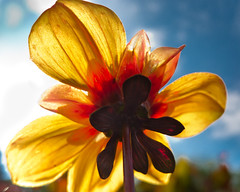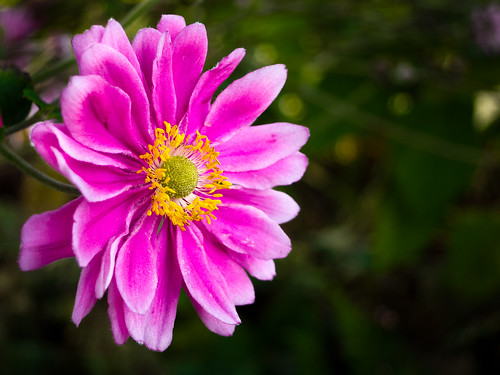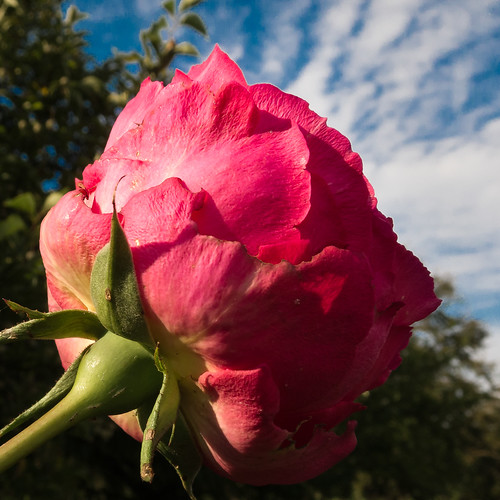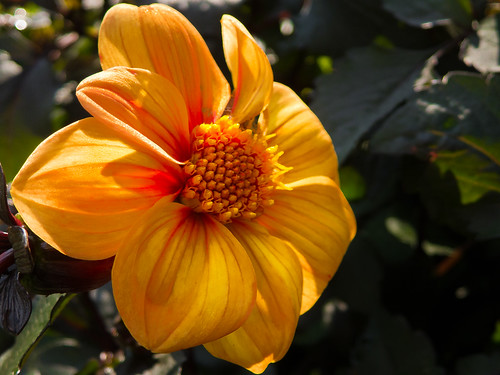A Seriously Small Camera: Canon S90 First Impressions
Originally published September, 2010
A funky little black box with serious potential.
 Suncatcher Suncatcher
I routinely take my big SLR's and lenses EVERYWHERE -- or really almost everywhere. There are places and times when you can't have a backpack full of gear, or even carry a large DSLR with professional zoom lens. I've been considering a small, pocketable camera to carry around, but felt I gave up too much control and image quality to really be satisfied with the images. Enter the Canon S90 IS.
The Canon S90 has been around for about a year or so now and I've been thinking about it. Here's a few key points
- LARGE SENSIBLE SENSOR: It has a larger sensor that is smaller than the smallest DSLR sensors, but much bigger than normal point-and-shoot camera sensors. In addition, it has a "sensible" 10 megapixel specification. These two things give it unusually good low-light capability and reduced noise over regular point-and-shoots even at low ISO's.
- EXCELLENT FAST LENS: It has a limited optical zoom range of (35mm equivalent) 28-105mm. That's a good thing. "Super Zoom" lenses ALWAYS give up optical quality in some way, even the most expensive of them. On a regular point and shoot you might not notice that since even at low ISO's most of them smear detail to reduce noise. At 28mm it's still sharp wide open at F/2. That's pretty fast and wide.
- RAW FORMAT: It shoots in "RAW". If you don't know what this is, that's okay. For people who shoot in bad light particularly, RAW is a lifesaver. It is, as it implies, the "raw data" off the camera sensor before it's "cooked" by the software in the camera. Consider it the digital version of a film negative.
- REAL CONTROLS: It has great real-time control. I shot about a 150 shots and didn't need the menu system. It has enough buttons, and two real control rings (one around the base of the lens) that allow you to control virtually any manual parameter. You can assign whatever you want to each one (within reason). I had the front ring as exposure compensation (because I adjust it sometimes with every shot) and the back ring as aperture (shooting in aperture priority mode: "Av" in Canonese). The rear ring is smaller and sloppier than the large front click-detent ring.
There are other pocket cameras that shoot in RAW, and in fact the S90 is Canon's answer to a couple of cameras like the Panasonic LX3 (and even their own Canon G11) that use larger sensors and appeal to serious photographers who need a small camera. The S90 though does away with flash shoes, optical viewfinders, and other options to make a true pocket sized camera while retaining the optical and electronic level of things like the Canon G11.
However, all those other cameras stretch the concept of being a "pocket camera" -- and stretch you pocket! The S90 isn't s super slim thing, but it's not bulky either.
I recommend you look up many of the reviews on this camera online and you'll find a lot of positive comments and all the downsides are what you'd expect. Here is one from Ken Rockwell to get you started at this page.
What I wanted to know was: can I use this camera to do the kind of shots I do with my DSLR's? My first real test was today at Longwood Gardens, a large botanical garden in Kennett Square, PA where I live.
Here's some observations about the camera's performance and ability to shoot what I wanted to shoot and get the results I envisioned. This is not a serious, comprehensive review, just my feelings about how usable this camera is for me and why.
FLARE AND GHOSTING
If you look at the shot at the top of the page, it was shot into the sun from behind the flower. Despite the fact that I worked it over from a RAW image, I can tell you that the original was high contrast without flare or ghosts. That shot was done wide at a low f-number and that shot shows impressive handing of extremely bright high-contrast light.
BOKEH
A pleasant surprise. Even shot wide, the large aperture allows nice bokeh if your background is far enough away, as shown by this shot.
 Fuschia Fantasy Fuschia Fantasy
There are two things about bokeh: getting enough and what "quality" it has. Bokeh is often described in terms of "great/good/neutral/bad/frigging awful"....well, those are the technical terms...but they attempt to describe how the out of focus areas look. Bad bokeh has hard edges, rings, and so forth that make it MORE obvious, rather than a smooth background for the main subject.
Anyway, I consider the bokeh neutral to good, and I can get bokeh with the S90 -- all of which makes this little lens a pleasant surprise.
DYNAMIC RANGE
I like having a wide dynamic range in my shots, though you always run a risk. I often choose to shoot in crappy, bright sunlight with deep shadows and then dodge up the shadows so they're not black. Look at this shot.
 Cloud Fountain Cloud Fountain
This shot has white clouds, bright sun glare on the flower, and deep shadows. Shooting at the base ISO of 80 for this photo I was able to tease out a satisfactory shot. Shooting smaller sensors, even one as largish as this one, requires good noise control and I depend on Adobe Lightroom for my work there. The combination of the Canon and Lightroom did not disappoint, though "pixel peeping" I can see more noise in this shot than I would expect on my DSLR's at ISO 100 -- and that's perfectly normal. The S90 can make great, clean images. At any reasonable print size I'm not sure you'd see the differences.
COLOR
Canon's point and shoots have always been known for their great .jpg color. Although that's being derived in an external program, it's apparent that there isn't anything wrong for my purposes with this sensor. I was able to get the color I wanted. I don't know if the ADC is 12 bit, or 14 bit, or 10 bit -- but it produces nice images. Here's one more image I'll include not so much because it illustrates the color point, but because I have 4 images I processed and have only used three, lol.
 Sun Face Sun Face
CONCLUSION
So, my test showed me that for these "flower portraits" I do, I can get the look and feel of my DSLR shots including good clarity, high dynamic range, and reasonable bokeh. I can't get anything like my 70-200mm VR II can do on my D200, but I like these shots and I was able to roam about taking photos while looking like any other tourist.
Well, maybe not like ANY other tourist, lol. As I was testing, I lay down in the wet early morning grass at Longwood Gardens to get some of my shots. Wandering about were a couple of the "working cats" at Longwood that do rodent control.
Now, they aren't unfriendly at all, but they are often standoffish and cautious. This one, seeing me down on my belly for extended periods found my pose curious and non-threatening and decided to approach me.
After we got to know each other, she followed me around and when I stood, she came and stood next to me with one paw on my sandaled foot. When I lay down, she lay down next to me -- she was very cute!
Here's a very casual shot of her after she'd just gotten up from lying in the grass and you can see bits all over her. Every picture I took, her ears were back!

Say Hello to my Little Friend
In fact, I decided to get a picture both of us together so I put on self-timer mode with her lying next to me, and put the camera out in the grass in front of us.
As soon as I removed my hand from the camera she went and lay down on it! I ended up with a black shot of the lens up against her belly, lol.
Hope I see her again.
But I digress...
Bottom line: if you need a little point and shoot that can make some "real" photos for you, consider this one. There's an updated version with more features called the S95 for about $100 more than a refurbished S90. I bought this one refurbished at Adorama for $309 shipped.
Thanks for reading, now go out there and take some pictures!
|